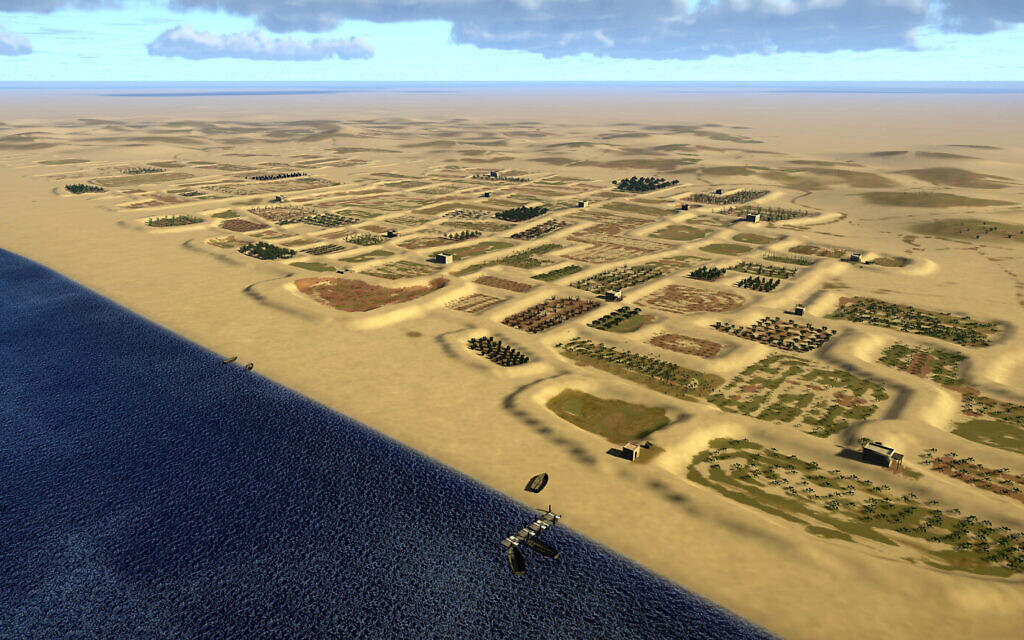Researchers from Bar Ilan University and the Israel Antiquities Authority recently announced the results of a study performed on an excavation carried out on an ancient 1.5-square-kilometer (0.6-square-mile) farm located just south of Caesarea.
The research team was headed by Prof. Joel Roskin, a geomorphologist and landscape archaeologist at Bar Ilan University, and Dr. Itamar Taxel, the head of the Pottery Specializations Branch at the Israel Antiquities Authority.
Dubbed the “Caesarea Gardens”, the farm was laid out in a checkerboard pattern of 370 plots created by building berms that averaged 4 meters (13 feet) high and 20 meters (65 feet) long. The berms, made of sand and agricultural waste containing marble fragments, coins, stones, ceramics, and glass took over 1 million workdays and hundreds of workers to build. The Caesarea Gardens were first used sometime in the 10th century CE and were abandoned in 1140 CE by the Crusaders.
It is believed to be the world’s first large-scale sand dune farming. Remarkably, the outlines of the berms are still visible today.
“It’s a pretty remarkable feat to think of someone building something on the beach that lasted for 1,000 years,” Roskin told Times of Israel. “This was an ingenious method that incorporates and reuses the refuse from nearby town dumps, enriches the soil, develops the engineering of soil and berms, and takes advantage of underground water.”
“Since we haven’t found evidence of significant sand farming anywhere in the world, prior to this system, we suggest that this is the first significant development of sand farming in the history of humanity,” Roskin said.
First discovered in the 1940s, the gardens were partially excavated in 1973 and 1974 by Yosef Porat of the IAA. Structures believed to have been a guard tower, a storage facility, and residences for the seasonal farm workers were also discovered at the site.
Sand dune farming was also used in various regions including the Gaza Strip, the Sinai Peninsula, the Mediterranean coast, the Sahara, and the Atlantic coast of the Iberian Peninsula, as a result of Islamic expansion. Similar gardens were found near Palmachim Beach but they were destroyed by military activity. A similar site near Zikim Beach near Ashkelon has yet to be excavated.
The plot-and-berm agroecosystem has been used in Spain and Portugal since the 15th- century and is still used today in northwestern Portugal on a small scale.
Roskin and Taxel did not discover any archaeobotanical residues or preserved remains of the crops, so they’re not sure what was grown on the farm. It is believed that the plots were used for the cultivation of vegetables, rather than orchards, cereal crops, or vineyards.
“One idea is that there was a unique type of crop that could be grown in this type of environment, but we are looking in Islamic and Arabic texts, and so far we have found nothing,” said Roskin.
The seaside farm also brought the benefit of a freshwater table that is only about a meter below the surface and stays stable throughout the year. This would have allowed for a longer growing season. The sandy soil also inhibited fungi and provided better drainage with the berms providing wind protection.



